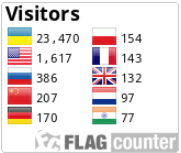INTERACTIVE LEARNING METHODS IN HIGHER EDUCATION INSTITUTIONS
DOI:
https://doi.org/10.28925/2518-7635.2023.810Keywords:
interactive learning methods, digital applications, higher education institutions, student-centred learning, creativityAbstract
The article is devoted to the actual problem of using interactive learning methods in the educational process in institutions of higher education. Attention is focused on the fact that student-centred learning requires teachers to use innovative methods that ensure the maximum connection of theoretical information with its practical application, and the development of professional skills by directly solving cases and problem situations. With this in mind, the authors analysed some modern methods of interactive learning and found that a characteristic feature of modern higher education is the development of students' critical thinking using such methods as ‘Fishbone’, Bloom's daisy and cube, and Brainstorming. It was determined that an integral component of the modern educational process is the use of various digital applications that help the teacher to develop interesting lessons. Usually, they are aimed at solving several tasks: gamification of learning, consolidation of learned material and evaluation of learning results. The tutorial was analysed as an interactive form of independent work. It is aimed at in-depth familiarization of students with the studied subject, discussion of creative projects during classes and development of creative potential. This form of independent student work allows you to teach them to think, for example, to synthesize various sources, formulate their own theses and prove them, anticipate criticism of their arguments and answer questions. At the same time, the authors emphasize that active methods should be organically combined with passive ones. In view of this, the teacher should carefully consider the procedure for using traditional and interactive teaching methods, not to abuse a significant number of the latter, as this can lead to a decrease in motivation.
Downloads
References
Al-Badrawy, A. Abo El-Nasr. (2017). Role of engineering design in enhancing ABET outcomes of engineering programs at Taif University. International journal of applied science and technology, 6(1), 9–15. esearchgate.net/publication/317267917
Carrington, A. (2012). The Padagogy Wheel. https://designingoutcomes.com/the-padagogy-wheel-its-a-bloomin-better-way-to-teach/
Giorgdze, M. & Dgebuadze, M. (2017). Interactive teaching methods: Challenges and perspectives. International E-Journal of Advances in Education, 3(9), 44–548. https://doi.org/10.18768/ijaedu.370419
de Bono, E. (1969). The Mechanism of Mind. The Scientific Book Club, London.
Ivashko, O. (2019). Teaching foreign languages at third-year students in Poland. The Modern Higher Education Review, 3. https://doi.org/10.28925/2518-7635.2018.3.12
Kaoru, I. (1968). Guide to Quality Control. Tokyo: JUSE.
Lozynska, L., & Tsikhotska, O. (2016). The role of interactive learning technologies in the process of teaching foreign languages at higher medical educational institutions. Science and Education, 12, 5–9. https://scienceandeducation.pdpu.edu.ua/doc/2016/12_2016/3.pdf
Marchenko, N.V., Yuzkiv, H.I., Ivanenko, I.M., Khomova, O.M., & Yanchytska, K.M. (2021). Electronic resources for teaching Ukrainian as a second language. International Journal of Higher Education, 10(3), 234–245.https://doi.org/10.5430/ijhe.v10n3p234.
Mospan, N., & Slipchuk, V. (2020). International students in higher education medical institutions in Ukraine: Current state of play and prospects. Continuing Professional Education: Theory and Practice, 3, 60–70. https://doi.org/10.28925/1609-8595.2020.3.7.
Ostapchuk, D., & Mironchuk, N. (2014). Interactive teaching methods in higher education institutions. Modernizatsiia vyshchoi osvity v Ukraini ta za kordonom. Zhytomyr, Ukraine, 140–143. http://eprints.zu.edu.ua/13837/1/17.pdf
Pappas, G. (2020). Case study: The didactic model of socio-cognitive theory of learning in the teaching of English as a foreign language. Teaching state and activity verbs. The Modern Higher Education Review, 5, 10–19. https://doi.org/10.28925/2518-7635.2020.5.1
Radchenko, M.A. (2014). Interactive learning technologies in the professional development of future specialists [Interactive learning technologies in the professional development of future specialists]. Pedahohika formuvannia tvorchoi osobystosti u vyshchii i zahalnoosvitnii shkolakh, 34 (87), 299–306. http://nbuv.gov.ua/UJRN/Pfto_2014_34_45
Slipchuk, V., Braslavska, O., Kobernyk, A., Novykova, I., Remekh T., & Kobernyk, H. (2020) Innovative teaching technologies at universities. International Journal of Advanced Research in Engineering and Technology (IJARET), 11(5), 253–263,https://doi.org/10.34218/IJARET.11.5.2020.0027.
Spivakovskyy, S., Slipchuk, V., Svyrydenko, O., Perova, S., & Krysalo, O. (2020). Virtual space as a platform for student research practices. International Journal of Industrial Engineering & Production Research (IJIEPR), 31(4), 547–558. https://doi.org/10.22068/ijiepr.31.4.547.
Smit, R., Hess, K., Taras, A., Bachmann, P., & Dober, H. (2023). The role of interactive dialogue in students’ learning of mathematical reasoning: A quantitative multi-method analysis of feedback episodes. Learning and Instruction, 86. https://doi.org/10.1016/j.learninstruc.2023.101777.
Turkot, T.I. (2011). Higher education pedagogy. Kyiv, Ukraine.
Vroom, K., Gehrtz, J., Apkarian, N., Elizondo, T. A., Ellis, B., & Hagma, J. (2022). Characteristics of interactive classrooms that first year students find helpful. International Journal of STEM Education, 9. https://doi.org/10.1186/s40594-022-00354-y
Xia, X., & Qi, W. (2023). Interpretable early warning recommendations in interactive learning environments: A deep-neural network approach based on learning behavior knowledge graph. Humanities and Social Sciences Communications, 10(1), 258. https://doi.org/10.1057/s41599-023-01739-2.
Yuzkiv, H.I., Ivanenko, I.M., Marchenko, N.V., Kosharna, N.V., & Medvid, N.S. (2020). Innovative methods in language disciplines during profile training implementation. International Journal of Higher Education, 9(7). https://doi.org/10.5430/ijhe.v9n7p230.
Published
How to Cite
Issue
Section
License
Copyright (c) 2023 The Modern Higher Education Review

This work is licensed under a Creative Commons Attribution-NonCommercial 4.0 International License.













